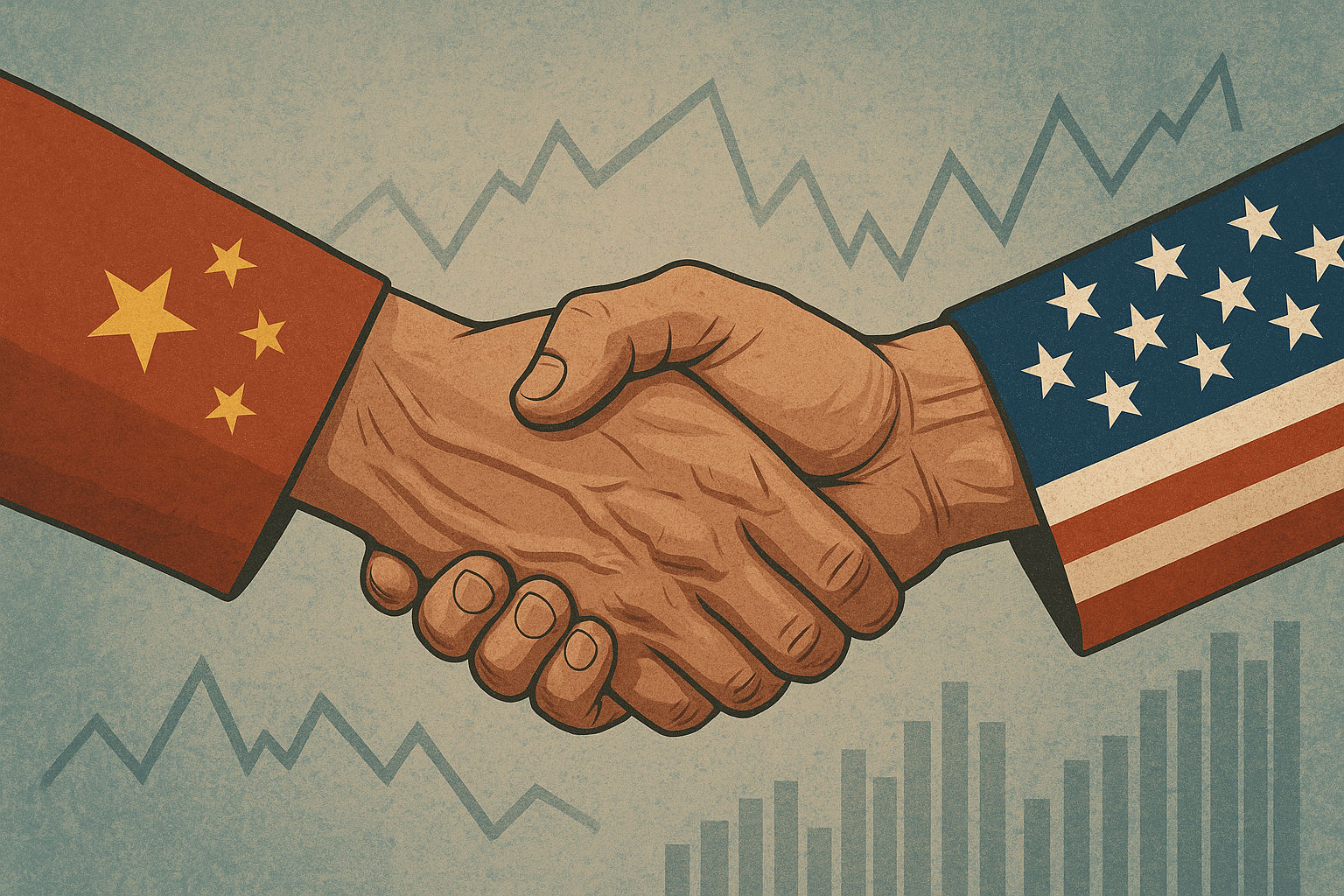A Trade Truce Changes the Mood
After nearly two years of escalating friction, the U.S. and China agreed to a 90-day trade truce earlier this month. The agreement, which includes temporary tariff rollbacks on key manufacturing inputs and agricultural goods, has fueled cautious optimism among market analysts.
Barclays, which previously forecasted a 0.3% contraction in U.S. GDP for 2025, revised its estimate to a modest 0.5% expansion following the announcement. The bank cited improved global trade dynamics and a rebound in American exports as key reasons for the shift.
This shift in policy has also alleviated pressure on domestic industries reliant on global supply chains, particularly in sectors like automotive manufacturing, consumer electronics, and semiconductors.
Markets Climb, But Caution Remains
The stock market has responded positively to the policy shift. In the last week, the S&P 500 is up over 14% since 21 April, nearing record highs, while the Dow Jones Industrial Average gained nearly 12 basis points.
Despite market gains, consumers remain wary. The University of Michigan's latest consumer sentiment index showed only a marginal improvement, with long-term inflation expectations rising to 7.3%. This suggests households still feel the sting of elevated prices, particularly in housing, food, and energy.
Mixed Signals on Growth
According to the Bureau of Economic Analysis, U.S. real GDP fell at an annualized rate of 0.3% in the first quarter. The decline was driven primarily by an increase in imports and a slowdown in government spending.
However, consumer spending and non-defense exports remained relatively strong, providing some ballast to the economy. Economists are split on whether the Q1 decline represents a temporary dip or a sign of deeper structural weaknesses.
The labor market, for now, remains steady. Unemployment remains low at 4.1%, and wage growth has continued at a modest pace.
Inflation Still Haunts the Fed
The Federal Reserve maintained interest rates at their current level during its May policy meeting. Chair Jerome Powell signaled a "wait-and-see" approach, acknowledging both the progress made in cooling inflation and the potential risks of acting too soon.
The PCE price index, the Fed's preferred inflation measure, rose 3.6% year-over-year in Q1. While that figure is down from last year's highs, it's still well above the Fed's 2% target.
Powell reiterated that any potential rate cuts later this year would depend heavily on upcoming inflation data and the stability of global supply chains.
What Lies Ahead?
With trade tensions easing and equity markets gaining, there’s a growing narrative that the U.S. economy could avoid a hard landing. However, this path remains narrow.
Global risks—from geopolitical instability to oil price shocks—remain a constant threat. Domestically, political gridlock heading into the 2026 midterms could hamper fiscal flexibility.
For now, the economy remains on a tightrope—balanced between renewed hope and lingering headwinds. Much will depend on whether recent gains can be sustained without triggering new waves of inflation or fiscal tightening.
